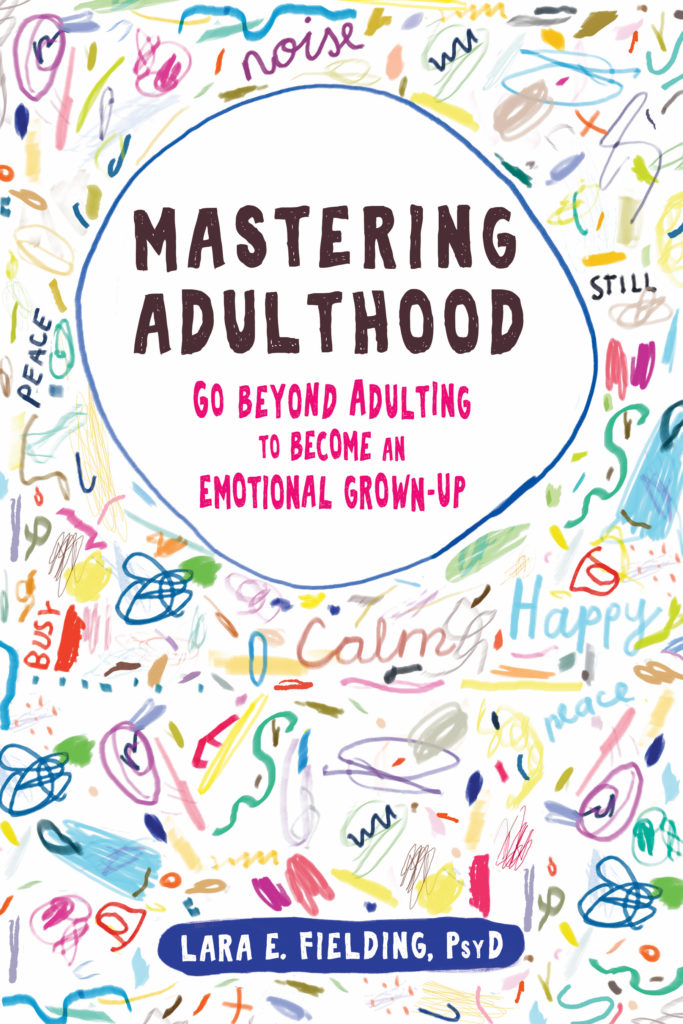When you’ve been triggered and your emotion passengers are trying to hijack your mind-body vehicle, it can feel like your loosing control! You get pulled into a full cascade of psycho-physiological reactivity. Breathing gets shallow, muscles tense, and we can’t think clearly, you’re in full-blown autopilot! So sometimes, you need a short-term skill to get through a moment, without making it worse by acting impulsively.
A good way to hack into the reaction is to use our physical sensations to change the messages being sent upstream to our brain. These skills will help you hack into your body chemistry so you can regain a sense of self-control.
1. Ice, Ice Baby.
Rapidly shifting your body temperature can help over ride the physiological reactions to a trigger. I can’t tell you how many times I’ve heard clients respond with “Wow, that really worked!” as I phone coached them to use this skill.
Let’s Practice.
Get some ice (or a bag of frozen food) from the freezer and put it in a plastic bag. Place it on your forehead. Next, hold your breath for 30 seconds. Put your complete attention into feeling the ice and holding your breath.
Doing this practice activates the dive response in your body, so that your brain thinks you’re underwater. It redirects essential blood flow to the brain and slows your heart rate. You can’t ruminate when your body thinks it’s underwater!
2. Slow and Easy: Paced Breathing
Your mind-body vehicle, like all vehicles, comes with an accelerator and a break system. Within your central nervous system, there is the sympathetic nervous system, which is the accelerator. It gets activated when you need to get moving to run away from a threat. Your breaths are short, shallow (only into the chest, rather than the belly) and rapid.
Your brake system is called the parasympathetic nervous system, and kicks in when a threat has passed. This system is also called the ‘rest and digest’ mode of your nervous system. It’s related to the slow sigh of relief you make when stress has passed. Here too, the system is bidirectional. So you can hack into it by actively pacing your breathing.
Let’s Practice.
On the next in breath, allow your belly to expand and the air you take in to fill your belly. As you inhale, count slowly to 5. Very briefly hold the breath at the top of the inhale. Now, slowly exhaling, for a count of 7. Repeat at least 5 times.
Notice how you feel after breathing in this way. This type of slowed belly breathing hacks into your breaking system to let your brain know that you are safe. The more you practice this type of relaxed breathing, the more accessible it will be to you the next time you feel triggered.
Practice Note. You may adjust the time to 3 and 5 seconds, or 6 and 8. The key is to make sure that the exhale is longer than the inhale.
3. Holding Tight and Letting Go
Another way to let go of a heightened emotional reaction is to get in there and catch when the tension is creeping up in your body. Our body is often sending us messages long before our mind starts to notice that we’re getting upset.
This skill will help you start recognizing when tension is building, and then practice letting go. For this skill, we’re going to actively practice tightening muscle groups related to emotions, then letting them soften. Are you willing?
Let’s Practice.
Work through all the following muscle groups. For each muscle group tighten as tight as you can for about 10 seconds, then as you’re letting go, say in your minds eye, “letting go,” as you take a moment to observe the difference in how you feel each time.
• Pulling your shoulders up to your ears as if your very stressed (hold), let go.
• Clenching your fists and tightening your forearms (hold), let go.
• Furrowing your brow as if you’re pissed off, (hold), let go.
• Clenching your teeth, pushing your tongue on the roof of your mouth (hold), let go.
• Stretching your lets out, tensing you’re thighs, buttocks and stomach (hold), let go.
Were you able to feel the distinct differences between holding and letting go? Feels better doesn’t it?
4. Half Smile: Like a Breath Mint for the Mood
Just as our emotions are hardwired in the body, they’re also strongly connected to our facial expressions. If you think about it, the facial expressions of happy, sad, scared, angry, and disgusted are universally identifiable. But when we’re feeling upset, we may try to hide our emotion by stonewalling our facial expressions. Does this work? Let’s check it out. Are you willing?
Let’s Practice.
You might begin this practice by bringing to mind something that’s bothering you. Now, as you think about this annoyance, put all your effort into covering any expression of emotion. Shut down any signs of expressiveness.
Hold this, and notice how your face feels, how you feel. Take a mental snapshot. Now, as you let go of the stonewalling, very slowly, not forcing anything, simply allow the corners of your mouth to float upwards. Take a mental snapshot. What do you notice?
Could you feel the natural sense of relief, a slight brightening of mood, as they have in research studies? The idea is not to plaster a fake smile on your face, particularly if your emotion is justified and it is a time and place where self-validation is in order.
This tool is very specifically for when you might be in public, and it’s not the time or place for exploring your emotions. I call this skill ‘a breath mint for the mood,’ because it will get your through when your in a pinch, but should not be used for ongoing emotional hygiene!
As with anything new we learn, skillfulness comes with repetition. So if you felt any of these practices worked for you, keep practicing! We all get hijacked by an emotion wave sometimes. The key is to get in there and hack into the ETA cycle ASAP so you can override the reactivity, before the emotion-action tendency impulse compels you to do something you regret!
I hope you find this blog helpful! If you have any questions, shoot me a message in the comments section. We’re all in this thing called Mastering-Adulthood together. So, let me know if you have any questions about how to be skillful with your emotions and building a life you love! And, may you BE-Well.
This blog was inspired by Dr. Fielding’s upcoming book: Mastering Adulthood: Go Beyond Adulting to Become an Emotional Grownup. To learn more helpful skills for Mastering Adulthood, sign up for the Mindful-Mastery SKILL WEEKLY newsletter, or follow me on Facebook, Twitter, or Instagram. Or YouTube for skills videos!
*These skills are adapted from Dialectical Behavior Therapy (DBT), which is a mindfulness-based treatment developed for difficulties with severe emotion dysregulation.


